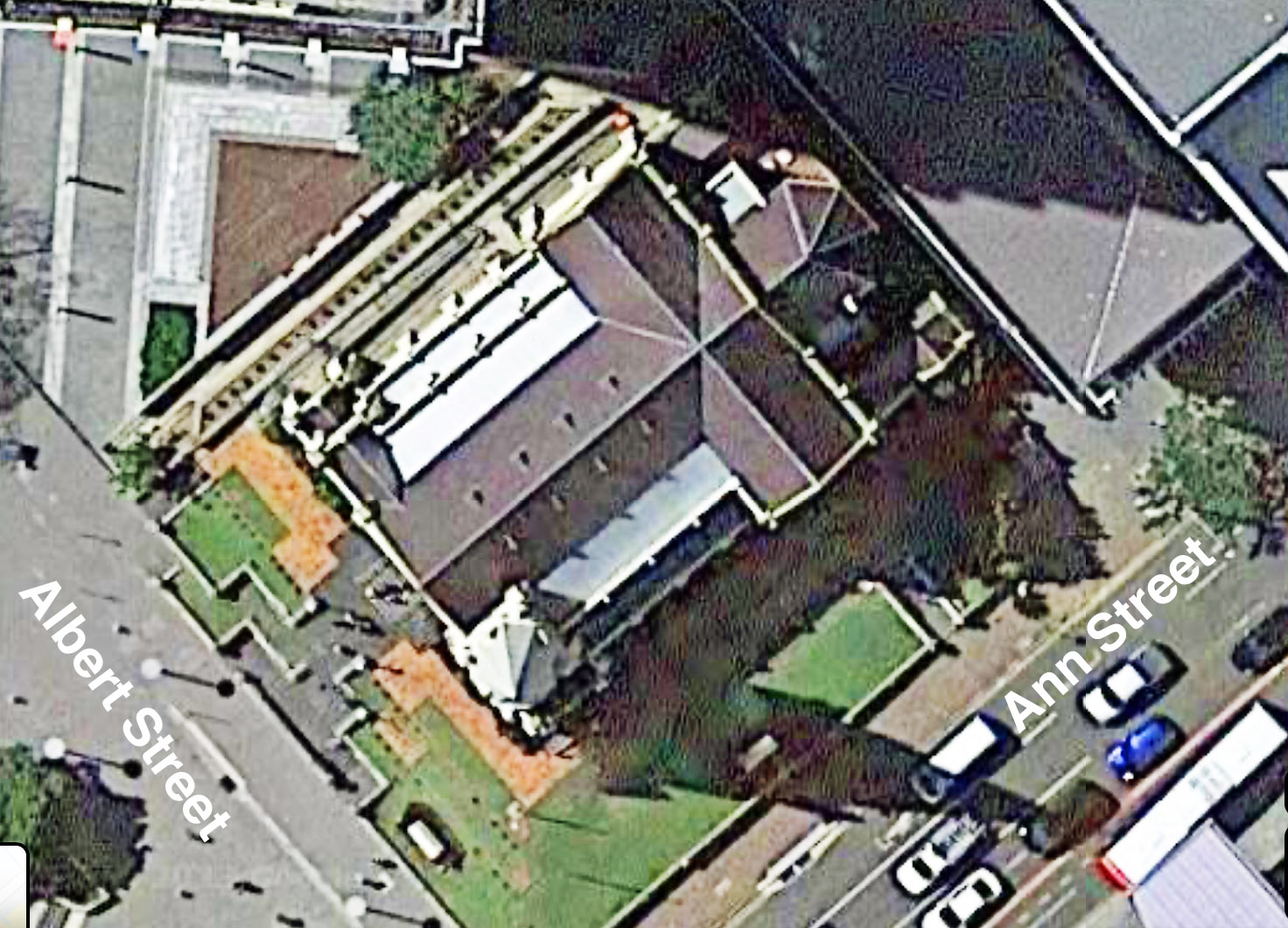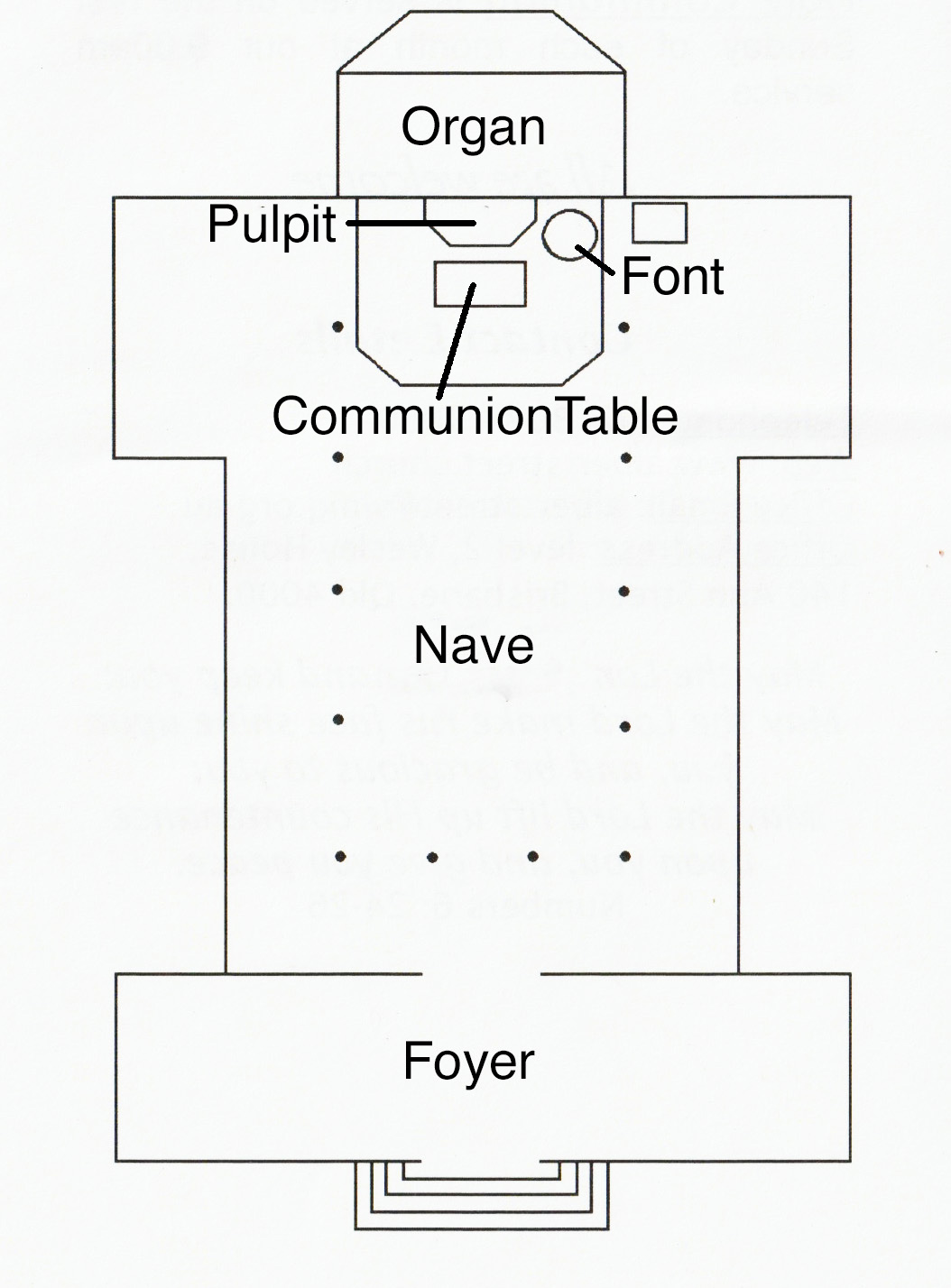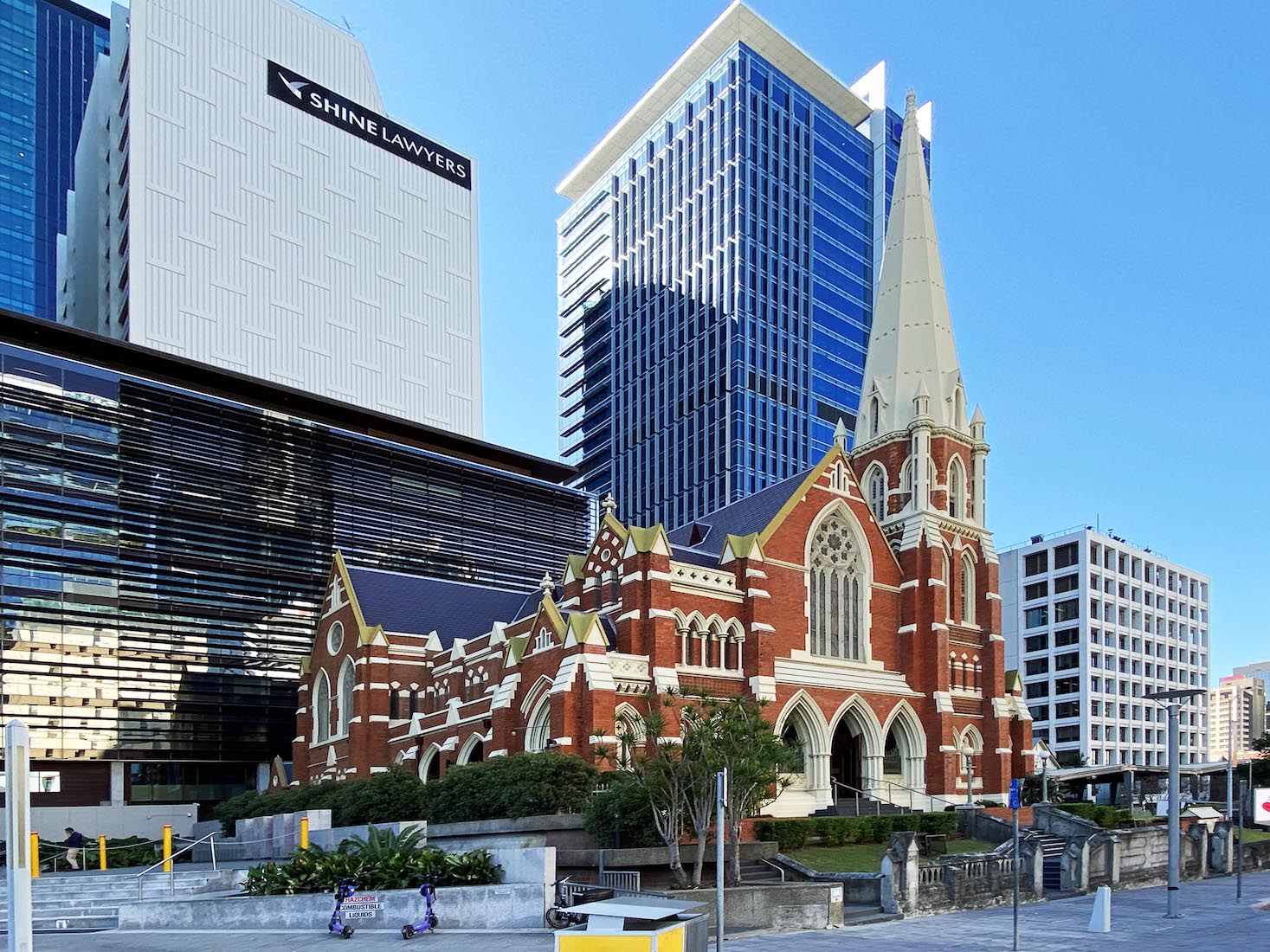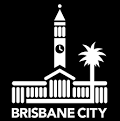
SATELLITE VIEW
The satellite view shows us the Church placed on the corner of Ann and Albert Streets. We notice that the sanctuary points roughly in geographical direction of north-east. On this site we shall use liturgical directions, taking the sanctuary in an Easterly direction (Capital E), and other directions accordingly. So Ann Street runs on the South side of the Church, Albert Street on the West. The East wall of the Church abuts a large adjacent building.
The Church is cruciform in shape, with covered nave aisles, a tower on the Southwest corner, and an apse at the East end. The Northeast and Southeast corners appear to be filled with extra Church building: probably sacristies and office administration.
In our investigation of this Church we shall begin by walking West along Ann Street (entering the diagram from the right), and follow around the Church in a clockwise direction as far as we are able. We will then enter the Church through the West door.

PLAN
This simple plan of the Church comes from a Church pamphlet.
In our exploration we shall enter through the West door (bottom of plan) and explore the foyer. We shall then walk around the nave and the short transept extensions in a clockwise direction, leaving the front sanctuary area until last.
The small rectangle above the word ‘FONT’ appears to indicate another lectern, and the font itself is tucked away behind this. The font appears on this site, although I did not actually see it during my visit, and I can find no online reference to it.
A brief history of this Church is given below. However, if you want to begin your tour of the Church immediately, tap / click on START . You can also access intermediate points in the tour by a tap / click on the following links:
HISTORY
Wikipedia
Years Built: 1888–1889
Address: 319 Albert Street, Brisbane, Queensland 4000
The first Methodist church in Brisbane, a modest brick chapel, was constructed in 1849 on the corner of Albert Street and Burnett Lane. It was replaced in 1856 by a larger building. By the early 1880s the congregation had grown substantially and in 1884 purchased a site on the corner of Albert and Ann Streets. A competition was held for the design of a new church which was won by G H M Addison.
The church was built for a cost of £10,000 by contractor Thomas Pearson & Sons. Other tradespeople included Petrie & Son (joinery), and Exton and Gough (stained glass windows). In keeping with the importance placed on music in Methodism, a large pipe organ was installed. It was built by George Benson of Manchester for a cost of £1,000. Five foundation stones were laid by prominent congregation members on 18 August 1888 and the church was officially opened on 8 November 1889.
In the 1920s, a marble honour board was erected in the front entrance vestibule commemorating the members of the congregation who served in World War I. Additional stained glass windows were installed as memorials in 1944 and 1947. Restoration work was undertaken in 1974-75 and involved the replacement of the slate roof. Further repair work on the building has been undertaken over the years.
In 1907, the church became known as the Central Methodist Mission in recognition of its wider responsibilities as the main Methodist church in the city. The congregation has been involved in a variety of welfare activities and has developed an extensive network of accommodation and other services for aged people.
On Thursday 1 March 1928, John Gladwell Wheen, the President-General of the Methodist Church of Australasia unveiled a memorial tablet for Henry Youngman in the church.
The church served as the symbolic centre of Methodism in Queensland. The Annual Conference was opened each year in the church and significant occasions for Methodists were celebrated there. With the formation of the Uniting Church in 1977, the church was renamed Albert Street Uniting Church.
Description
Albert Street Uniting Church is built of red brick with trimmings in white Oamaru limestone, now painted, and has a slate roof. It is an example of a Victorian Gothic Revival church with its cruciform plan shape, steeply pitched roof forms, the imposing spire beside the entry, and the heavy buttressing of the facades.
The entry to the church is from an open porch with three Gothic arches at the end of the nave. Similar arcades exist down the sides of the church. A single large Gothic opening with fine tracery is located above the entry porch. To the right of the entry is a tower rising to the octagonal spire which has tall dormers on four of its faces and four pinnacles at the corners of its base. The top of the spire has a wrought iron finial.
The roof on the nave also has small dormer ventilators. A side entry is to the right of the base of the tower and has a broad Gothic arch with a steeply pitched parapet topped by a Christian cross. The end of each transept has a rose window in the gable end above a pair of Gothic arched windows that in turn are above groups of smaller openings.
Internally, the nave floor slopes down towards the pulpit and the walls are rendered, with a timber boarded dado. The galleries contain tiered seating and are supported on cast iron columns with ornate capitals. The main ceiling and gallery soffits are diagonally boarded and finely carved timber work is incorporated into the gallery railings, roof structure and furnishings.
The focus of the interior is the pulpit and organ. The pulpit is raised several metres above the floor, and reflects the importance in the Methodist tradition that was given to preaching. Above and behind the pulpit is a large decoratively painted pipe organ which reflects the value placed by Methodists on music and singing.
https://en.wikipedia.org/wiki/Albert_Street_Uniting_Church
Another historical record from the Church itself can be found at
https://albertstreet.church/about-us/our-history



